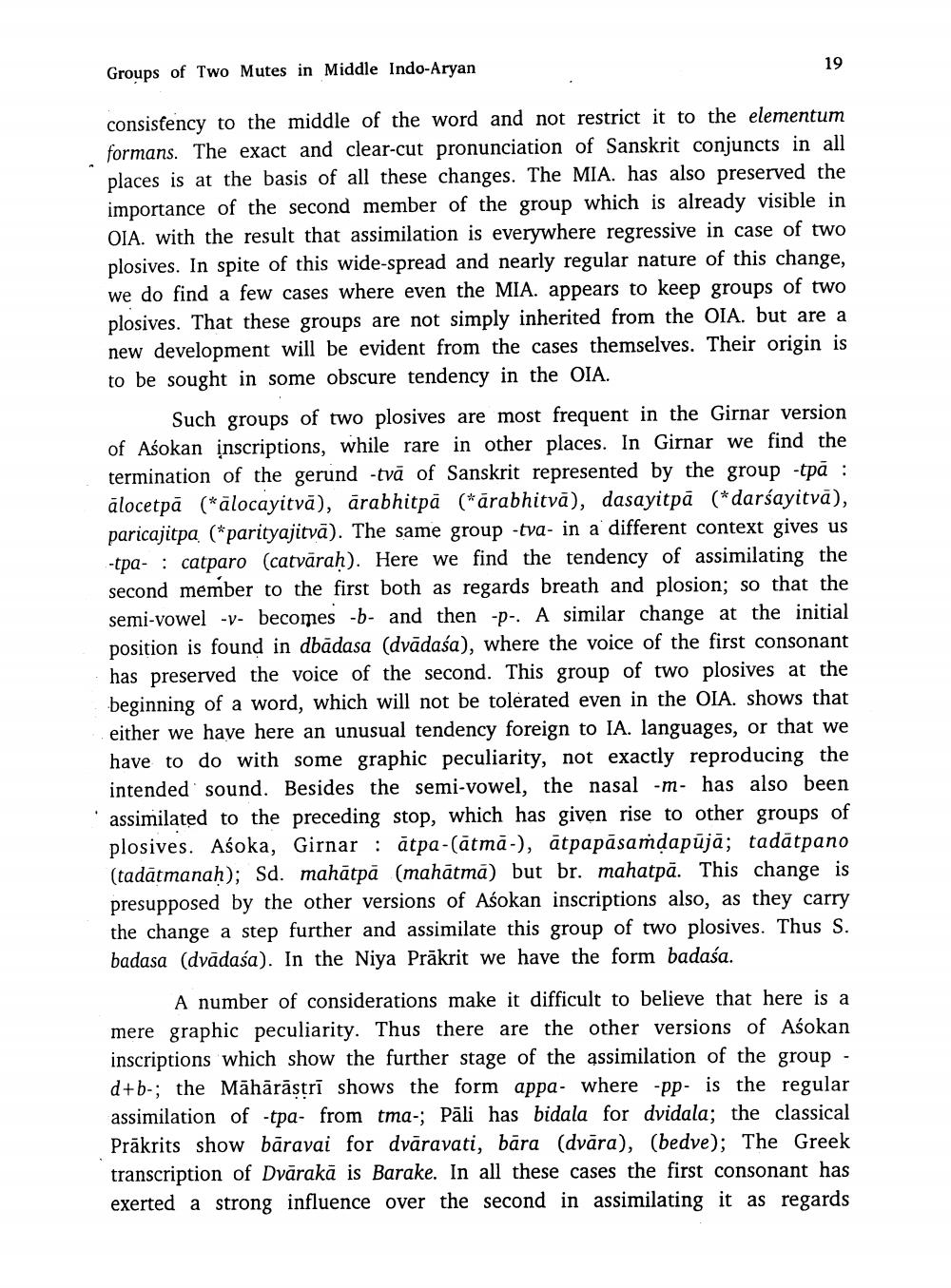________________
Groups of Two Mutes in Middle Indo-Aryan
consistency to the middle of the word and not restrict it to the elementum formans. The exact and clear-cut pronunciation of Sanskrit conjuncts in all places is at the basis of all these changes. The MIA. has also preserved the importance of the second member of the group which is already visible in OIA. with the result that assimilation is everywhere regressive in case of two plosives. In spite of this wide-spread and nearly regular nature of this change, we do find a few cases where even the MIA. appears to keep groups of two plosives. That these groups are not simply inherited from the OIA. but are a new development will be evident from the cases themselves. Their origin is to be sought in some obscure tendency in the OIA.
Such groups of two plosives are most frequent in the Girnar version of Asokan inscriptions, while rare in other places. In Girnar we find the termination of the gerund -tvā of Sanskrit represented by the group -tpā : alocetpā (kālocayitvā), ārabhitpā (*ārabhitva), dasayitpā (*darśayitvā), paricajitpa, ("parityajitvā). The same group-tva- in a different context gives us -tpa- : catparo (catvārah). Here we find the tendency of assimilating the second member to the first both as regards breath and plosion; so that the semi-vowel -v- becomes -b- and then p-. A similar change at the initial position is found in dbādasa (dvādaśa), where the voice of the first consonant has preserved the voice of the second. This group of two plosives at the beginning of a word, which will not be tolerated even in the OIA. shows that either we have here an unusual tendency foreign to IA. languages, or that we have to do with some graphic peculiarity, not exactly reproducing the intended sound. Besides the semi-vowel, the nasal-m- has also been assimilated to the preceding stop, which has given rise to other groups of plosives. Asoka, Girnar : ātpa-(ātmā), ātpapāsamdapūjā; tadātpano (tadātmanah); Sd. mahātpā (mahātmā) but br. mahatpā. This change is presupposed by the other versions of Asokan inscriptions also, as they carry the change a step further and assimilate this group of two plosives. Thus S. badasa (dvādaśa). In the Niya Prākrit we have the form badaśa.
A number of considerations make it difficult to believe that here is a mere graphic peculiarity. Thus there are the other versions of Asokan inscriptions which show the further stage of the assimilation of the group - d+b-; the Māhārāstrī shows the form appa- where -pp- is the regular assimilation of -tpa- from tma-; Pāli has bidala for dvidala; the classical Präkrits show baravai for dväravati, bära (dvāra), (bedve); The Greek transcription of Dvārakā is Barake. In all these cases the first consonant has exerted a strong influence over the second in assimilating it as regards




